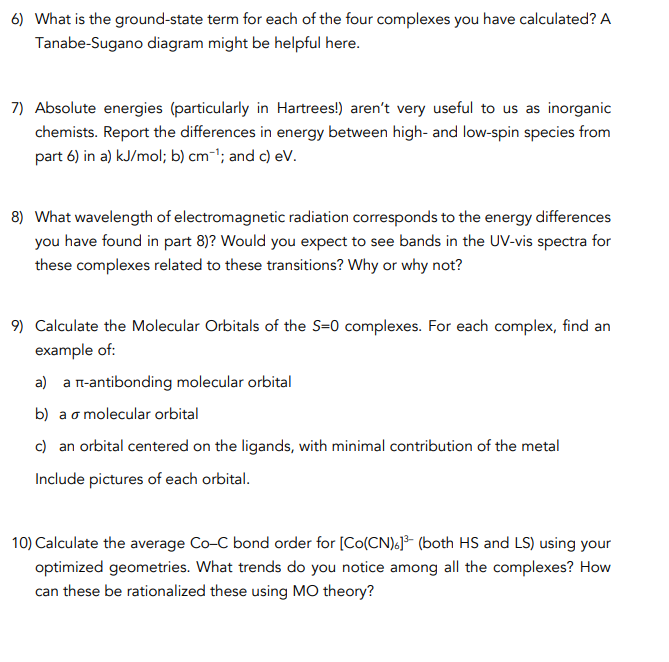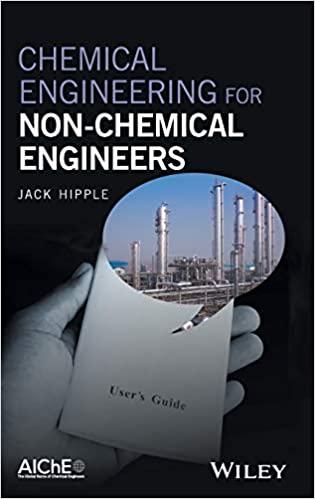Answered step by step
Verified Expert Solution
Question
1 Approved Answer
hartress were for the high spin cyanide -1934.905 low spin -1934.886 fluoride high was -1981.18912 and low was -1981.168 begin{tabular}{c|c} {[CoF6]3(LS)} & {[CoF6]3(HS)} hline[Co(CN)6]3(LS)


hartress were for the high spin cyanide -1934.905 low spin -1934.886
fluoride high was -1981.18912 and low was -1981.168
\begin{tabular}{c|c} {[CoF6]3(LS)} & {[CoF6]3(HS)} \\ \hline[Co(CN)6]3(LS) & {[Co(CN)6]3(HS)} \end{tabular} 6) What is the ground-state term for each of the four complexes you have calculated? A Tanabe-Sugano diagram might be helpful here. 7) Absolute energies (particularly in Hartrees!) aren't very useful to us as inorganic chemists. Report the differences in energy between high- and low-spin species from part 6) in a) kJ/mol; b) cm1; and c) eV. 8) What wavelength of electromagnetic radiation corresponds to the energy differences you have found in part 8)? Would you expect to see bands in the UV-vis spectra for these complexes related to these transitions? Why or why not? 9) Calculate the Molecular Orbitals of the S=0 complexes. For each complex, find an example of: a) a m-antibonding molecular orbital b) a molecular orbital c) an orbital centered on the ligands, with minimal contribution of the metal Include pictures of each orbital. 10) Calculate the average Co-C bond order for [Co(CN) ]3 (both HS and LS) using your optimized geometries. What trends do you notice among all the complexes? How can these be rationalized these using MO theoryStep by Step Solution
There are 3 Steps involved in it
Step: 1

Get Instant Access to Expert-Tailored Solutions
See step-by-step solutions with expert insights and AI powered tools for academic success
Step: 2

Step: 3

Ace Your Homework with AI
Get the answers you need in no time with our AI-driven, step-by-step assistance
Get Started


